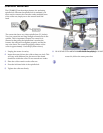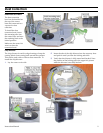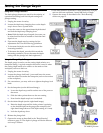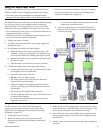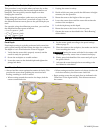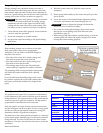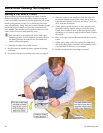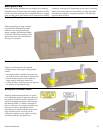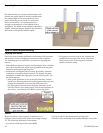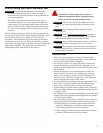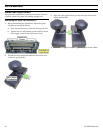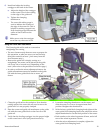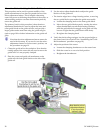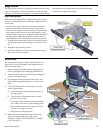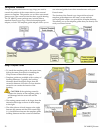
Multi-pass Cuts
Nearly all routing operations can be improved by making
multiple passes. In some cases the routing operation would
remove too mach material to be completed safely in a single
pass. In other cases, the finished cut is improved by making
a shallow, clean-up pass. Depending on the type of cut being
made, some multi-pass cuts are made by varying the depth
and others are made by varying the position. The different
types are shown below.
Multi-depth Ploughing
When ploughing out large volumes
of material or making deep dados,
make the cuts using successively
deeper settings until the final depth
is reached. The three positions of the
depth stop turret are well suited for
this type of operation.
Multi-depth Profiles
There are several reasons for making
multiple passes with edge forming, profile
cutters.
► For large profiles, a shallow first-pass can
be made to remove the bulk of the material.
► Several shallow passes can be made for
better control with large router bits.
► A final, shallow, clean-up pass can improve
the quality of the finished edge.
Multi-position (horizontal) Profiles
Altering the horizontal position of a router
cut for multiple passes is required whenever
the profile cuts back into the workpiece in a
way that changing the depth would destroy
the desired profile. A common example of
this is a slot cutter. A common problem with
this type of cutter is that sharp corners
between the cut profile and the uncut wood
edge will tend to tear out. This can be
reduced by making a very shallow scoring
cut before making a full profile cut.
Instruction Manual 15




